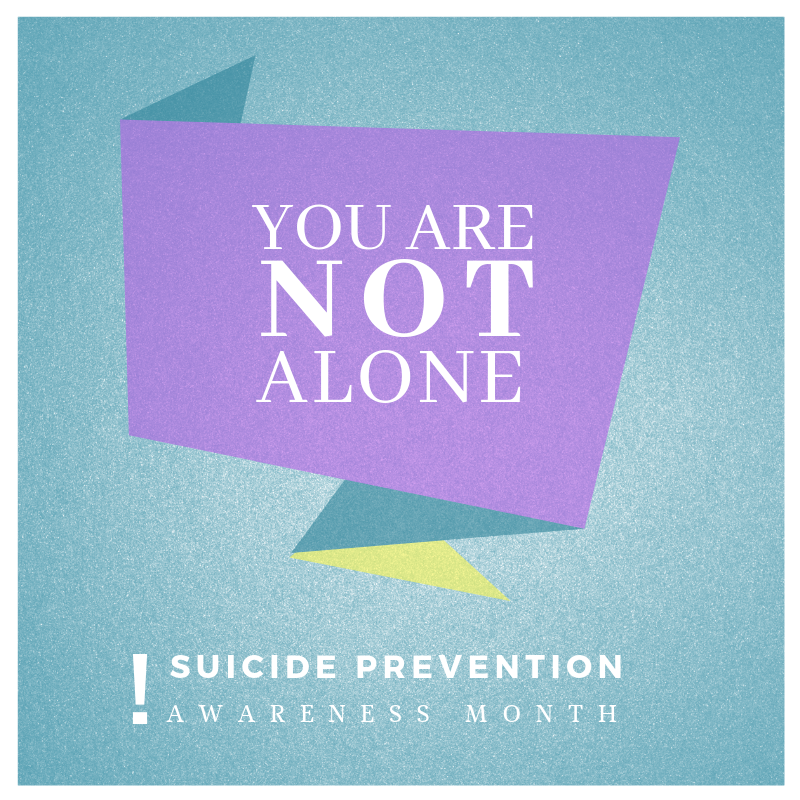
Suicide recognized as tenth leading cause of death

September is Suicide Prevention Awareness Month, reminding society that suicide can happen to anyone. The Center for Disease Control recognizes suicide as the tenth leading cause of death in the United States.
The American Foundation of Suicide Prevention (AFSP) estimates that 44,965 American die from suicide each year, which is about 123 suicides per day. An AFSP fact sheet lists suicide as in the eleventh leading cause of death state in Texas and is higher than death by homicide.
Suicide is often associated with a mental illness such as depression and anxiety. A new case study, developed by Brigham and Women’s Hospital, shows that 1 in every 5 college student has had suicidal thoughts. The study points out that college students are particularly vulnerable to emotional struggles, especially stress. These types of conditions can be harmful if not eventually relieved and may ultimately lead to suicide. Suicide awareness can help the UHCL community determine if a person is in distress and perhaps provide a helping hand.
UHCL has different resources available for people who are going through a hard time or who just need to talk to someone. The UHCL Counseling Services is free to current students and completely confidential. This department provides information about health and wellness, a relaxing environment and counselors who are willing to listen without judgment.
Jason Boothe, psychologist with Counseling Services, expressed that he wants every student to be aware of their facility. He stated that students should know that it’s normal to feel a certain way sometimes and taking the steps to attend counseling is an option. No problem is too small, even if an individual is just having a bad day and needs to talk about it.
“It’s important for a student to come to Counseling Services and feel safe,” Boothe said, ”If you don’t have safety, you don’t have anything. This is a place for students to feel like they are going to be heard and can freely express themselves.”
The National Alliance on Mental Illness (NAMI) points out that individuals from the LGBTQ community are three times more likely to face suicidal thoughts and depression because they battle the stigma of not being accepted for who they are as a person. NAMI also reports that individuals who are part of this community can lack the support they need from their family and face hardships, such as harassment. It is eight times more likely for an individual to commit suicide if the person was rejected by family after revealing his or her sexual orientation.
Natalia Marfil, president of the LGBTQ Student Coalition at UHCL, wants to let individuals know that the club provides a strong support system to students on campus. Marfil said the LGBTQ Student Coalition allows individuals to be their most authentic self and that the goal of the UHCL student organization is to educate people about the LGBTQ community.
“If you feel like you’ve lost your family, you can create a better family who’s going to love and support you for who you are,” Marfil said, “People who identify themselves with the LGBTQ community share a similar experience and have been in places that are not safe. We are all looking for that acceptance.”
A stigma is the disapproval of a person because a certain characteristic of them is viewed negatively. A 2016 NPR article reporting on a study by Graham Thornicroft’s, psychiatry professor at King’s College London, revealed that 50,000 people in 21 countries did not seek treatment because of social stigmas or a lack of knowledge.
Research supports that one of the main reasons people who are battling depression do not seek help is because of stigmas. NAMI explains that stigmas can create a negative environment, which can become toxic to the one needing help.
“I think a big step is taking away the stigma of counseling, therapy and antidepressants,” Marfil said. “I believe there’s this unusual culture today that shames people who help themselves in those ways. That is something our society needs to work on; those factors really attribute to our high suicide rates.”
Boothe explained that being blunt and asking someone if he or she is suicidal shows that you care about the person’s well-being. He advises if there is a concern, be direct and simply ask.
“One of the biggest ways to reduce stigma around suicide is to realize that asking someone if they are feeling suicidal isn’t going to put that thought inside their head,” Boothe said.
NAMI provides information about how to identifying the signs of someone who may be having suicidal thoughts and offers a suggestion on how to help someone in a crisis. Some signs may include talking about death, giving away personal items, feeling hopeless and withdrawing from others. NAMI suggests that the best strategy is to be a “friend” by asking, caring and offering support.
